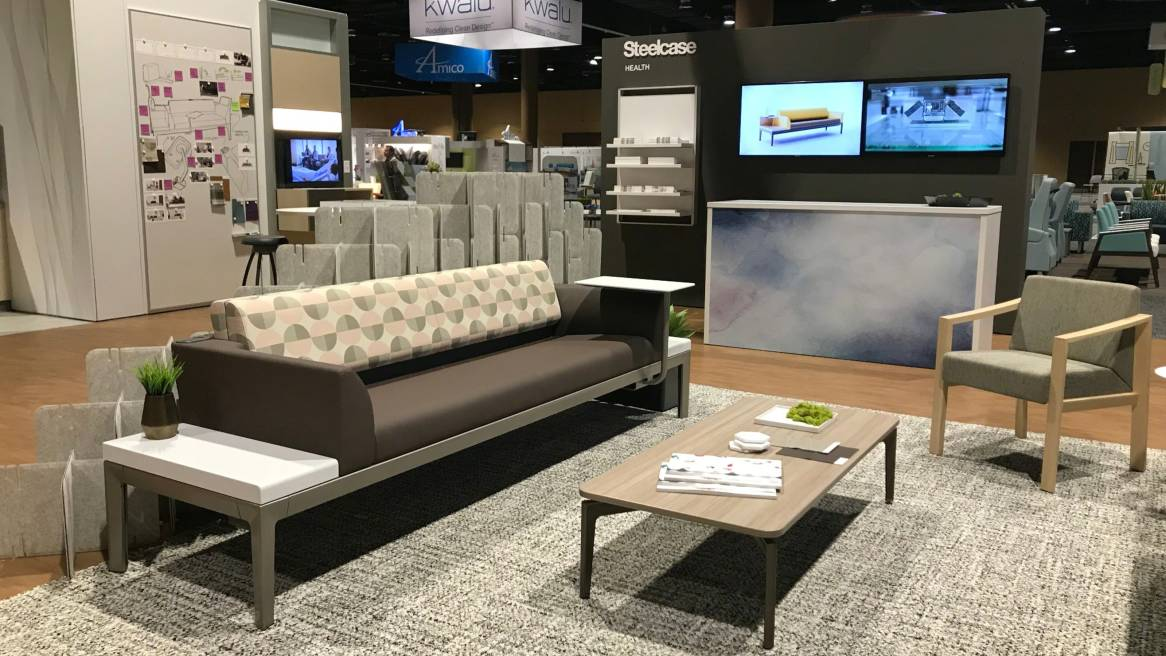
Your Healthcare Home
Big changes in the Healthcare industry give choice to the patient and challenges to Healthcare providers.
Healthcare designers have long known the push-pull of creating spaces that help provide the best outcomes for patients, best workplace for clinicians and best bottom line for Healthcare organizations.
Layer on today's uncertain health economy, rapidly changing technologies, nursing shortages, physician burnout, escalating costs, fickle consumers and the emergence of some nasty drug-resistant bugs and you’ve got design problems that demand some pretty creative solutions.
So where do healthcare designers and clients look for new ideas to solve these problems? Can Corporate, Retail, and Hospitality design sectors provide the innovation and inspiration sorely needed in Healthcare design?
Here are a few concepts outside the traditional healthcare design toolbox that we’ve seen both Healthcare designers and clients embracing.
Customer Experience.
In recent years, most Healthcare Systems have added the Customer Experience Officer (CXO) to the C Suite. They drive the organization to work collectively to deliver an optimal customer experience and support the C Suite evolution to cultural leadership in this transformative journey. The term “Patient Centered Design” has migrated to “Patient First Design” which more strongly emphasizes the shift and this can be seen in everything from valet parking, warm and welcoming lobbies, and monumental art programs to staff empathy training.
Employee Engagement.
While patients are first, care providers are close behind. Health leaders know their employees have some of the most difficult jobs in the world. They have witnessed how real collaboration breaks down silos, builds trust, inspires confidence and improves the morale of employees. And it’s often said that happy nurses make for happy patients.
Healthcare spaces that support teamwork include patient-free utility corridors with Medical Assistant/Physician work hubs, small Huddle rooms, and large Gemba* rooms with the latest teleconference technology. (*Gemba is the Japanese term for "the real place." Going to the Gemba is going to the place where value is created, where the real work is taking place.) Gone are the hierarchical closed-door private offices of the past.
Elements that support health worker wellbeing include Nurse Respite rooms, Caregiver Work Cafes, Physician Lounges, Quiet Rooms, and well-designed Sleep Rooms. Biophilia in the form of healing gardens and water features that look more hotel than hospital play a big role in nurturing those who nurture.
Data, Disruption and Diversity.
One Medical says: “We are changing the way you go to the doctor”. Parsley Health: “To get a feel for the Parsley Health experience, take the most depressing stereotypes you have about going to the doctor…and flip them.” And Carbon Health wants you to think of them “Like a Doctor in the Family”. These taglines are from a new breed of companies determined to deliver healthcare differently. Some are members-only, some take insurance, and some don’t, but what they all have in common is a highly personal approach.
“Boutique” healthcare businesses deal in root-cause medicine, are tech dependent, and stress healthy living; they believe that poor health is a social determinant. They exist in your community and in a sense are your community; you are seen on demand, in person or on your phone. And their spaces are very cool - like lofts or lounges with a nod to the neighborhood vibe. Not surprisingly the target demographic is Millennials.
Shifting Expectations.
As these trends gain traction, expectations are shifting. And whether you believe it is a right, a privilege or one’s own responsibility, whether you belong to a big HMO or your only access to care is through the emergency department, Healthcare plays a dominant role in your life. Where you make your healthcare home makes all the difference.